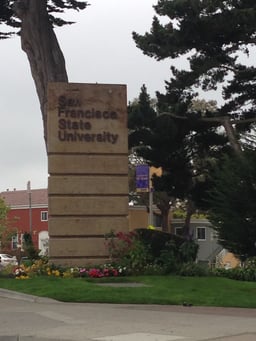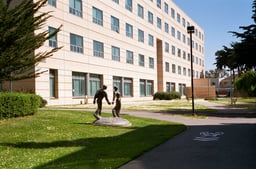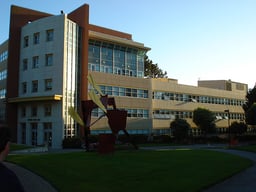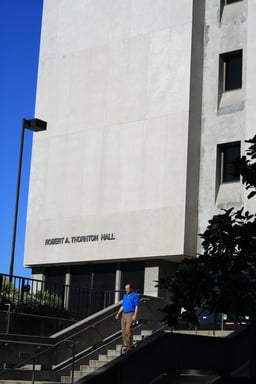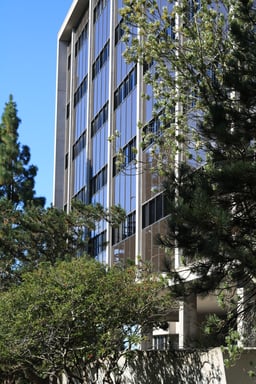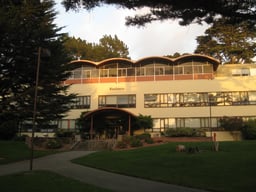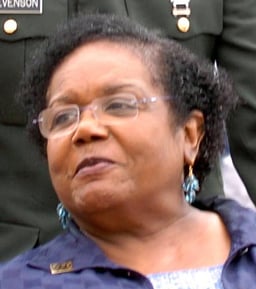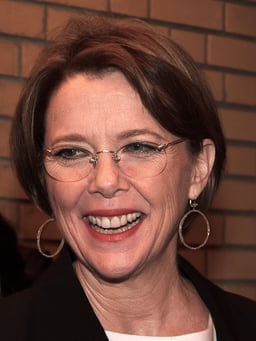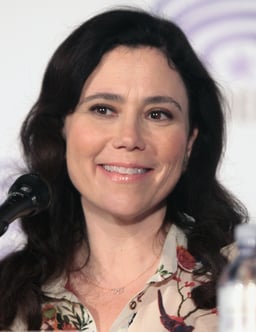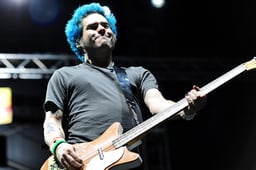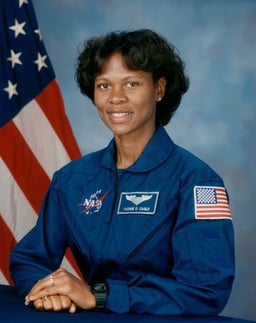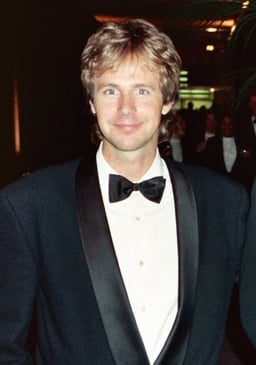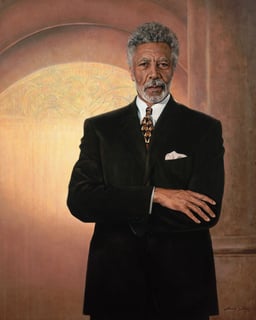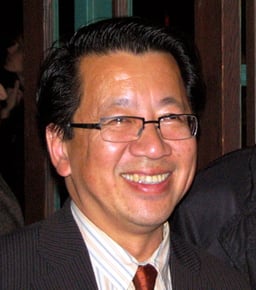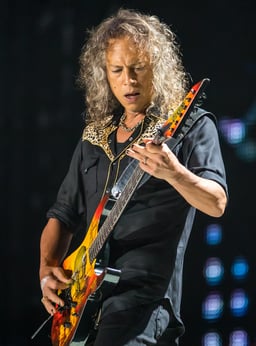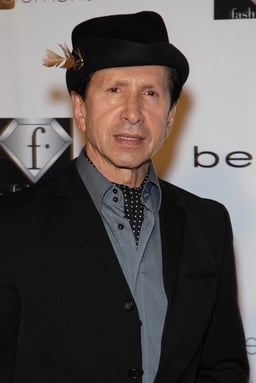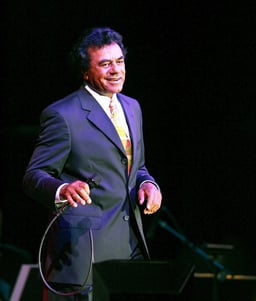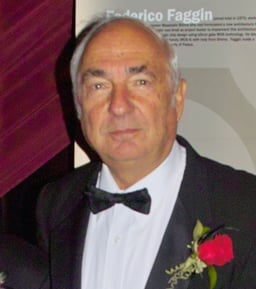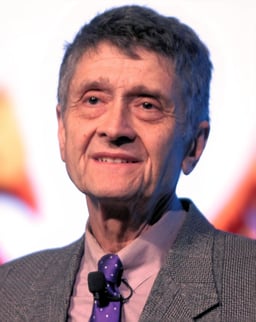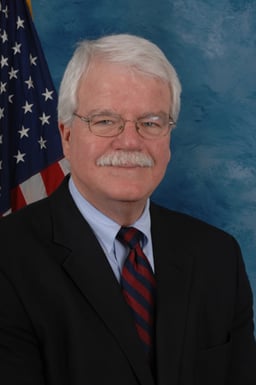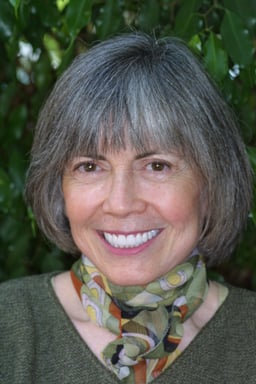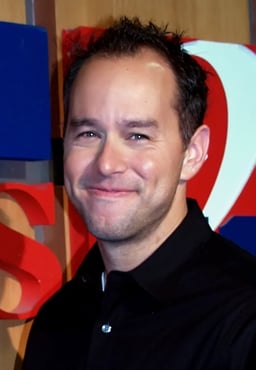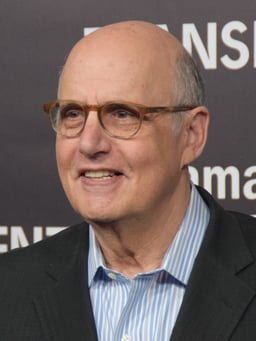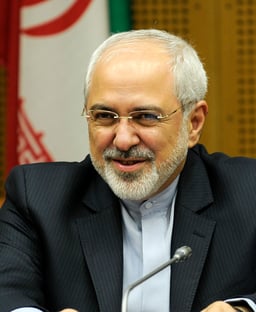San Francisco State University
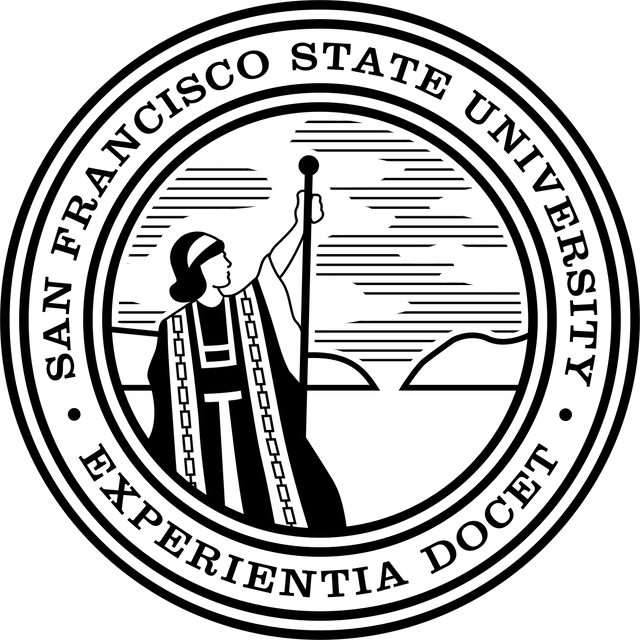
San Francisco State University

| Motto | Experientia Docet (Latin) |
|---|---|
Motto in English | "Experience Teaches" |
| Type | Public university |
| Established | 1899 |
| Endowment | $90.8 million (2018)[1] |
| Budget | $351 million (2016)[2] |
| President | Lynn Mahoney |
Academic staff | 1,620 (Fall 2013)[3] |
Administrative staff | 2,010[4] |
| Students | 29,586 (Fall 2018)[5][6] |
| Undergraduates | 26,436 (Fall 2018)[5][6] |
| Postgraduates | 2,783 (Fall 2018)[5][6] |
| Location | , California ,United States |
| Campus | Urban, 141.1 acres (57.1 ha)[7] |
| Colors | Purple and Gold[8] |
| Athletics | NCAA Division II – CCAA |
| Nickname | Gators |
| Affiliations | California State University APLU |
| Mascot | Gator |
| Website | www.sfsu.edu [83] |
 | |
| University rankings | |
| National | |
| Forbes[36] | 426 |
| Times/WSJ[37] | 601-800 |
| Global | |
| U.S. News & World Report[38] | 863 |
| Regional | |
| U.S. News & World Report[39] | 31 |
| Master's University class | |
| Washington Monthly[40] | 95 |
USNWR departmental rankings [41] | |
| Fine Arts | 114 |
| Public Affairs | 94 |
| Public Health | 78 |
| Rehabilitation Counseling | 32 |
| Social Work | 77 |
| Speech–Language Pathology | 81 |
San Francisco State University (commonly referred to as San Francisco State, SF State and SFSU) is a public university in San Francisco. As part of the 23-campus California State University system, the university offers 118 different bachelor's degrees, 94 master's degrees, and 5 doctoral degrees along with 26 teaching credentials among six academic colleges.[7][9][10]
The university was founded in 1899 as a state-run normal school for training school teachers, obtaining state college status in 1921 and state university status in 1972. The 141 acre campus is located in the southwest part of the city, less than two miles from the Pacific coast. San Francisco State has 12 varsity athletic teams which compete at the NCAA Division II level, most as members of the California Collegiate Athletic Association.
| Motto | Experientia Docet (Latin) |
|---|---|
Motto in English | "Experience Teaches" |
| Type | Public university |
| Established | 1899 |
| Endowment | $90.8 million (2018)[1] |
| Budget | $351 million (2016)[2] |
| President | Lynn Mahoney |
Academic staff | 1,620 (Fall 2013)[3] |
Administrative staff | 2,010[4] |
| Students | 29,586 (Fall 2018)[5][6] |
| Undergraduates | 26,436 (Fall 2018)[5][6] |
| Postgraduates | 2,783 (Fall 2018)[5][6] |
| Location | , California ,United States |
| Campus | Urban, 141.1 acres (57.1 ha)[7] |
| Colors | Purple and Gold[8] |
| Athletics | NCAA Division II – CCAA |
| Nickname | Gators |
| Affiliations | California State University APLU |
| Mascot | Gator |
| Website | www.sfsu.edu [83] |
 | |
| University rankings | |
| National | |
| Forbes[36] | 426 |
| Times/WSJ[37] | 601-800 |
| Global | |
| U.S. News & World Report[38] | 863 |
| Regional | |
| U.S. News & World Report[39] | 31 |
| Master's University class | |
| Washington Monthly[40] | 95 |
USNWR departmental rankings [41] | |
| Fine Arts | 114 |
| Public Affairs | 94 |
| Public Health | 78 |
| Rehabilitation Counseling | 32 |
| Social Work | 77 |
| Speech–Language Pathology | 81 |
History
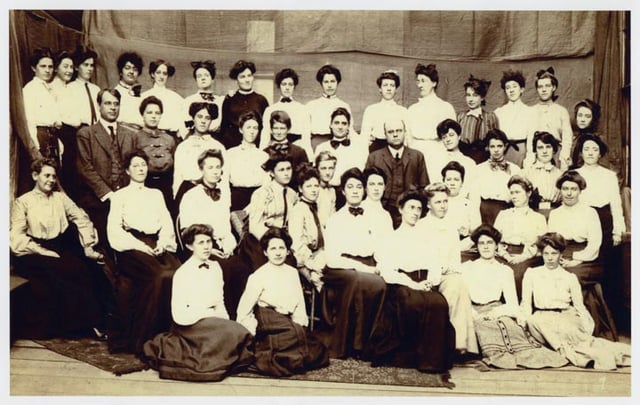
Graduating class, State Normal School at San Francisco, June 1906

The revised Malcolm X mural, painted by SF State students Eric Norberg and Kamau Ayubbo
1899 – Founded as San Francisco State Normal School.[11]
1901 – First graduating class
1906 – The 1906 earthquake and fire forces the school to relocate from Nob Hill to a new campus at Buchanan and Haight Streets.
1921 – Renamed San Francisco State Teachers College
1923 – First Bachelor of Arts degree awarded
1935 – Renamed San Francisco State College
1953 – Current campus near Lake Merced opens; it is formally dedicated in October, 1954.
1966 – Beginning of the era of campus protests led by student organizations including the Black Student Union, Third World Liberation Front, and Students for a Democratic Society. They protested college policies and off-campus issues such as the Vietnam War with sit-ins, rallies, marches, and teach-ins, sometimes clashing violently with police.
1968–69 – A lengthy student strike erupted in November, led by the Black Student Union and the Third World Liberation Front, who demanded an Ethnic Studies program and an end to the Vietnam War. It was a major news event for weeks in the aftermath of the assassination of Martin Luther King Jr. The strike ended in March 1969 with an agreement to create the School (now College) of Ethnic Studies.
1972 – Received university status as California State University, San Francisco
1974 – Renamed San Francisco State University
1975 – Cesar Chavez Student Center opened its doors to students
1993 – Downtown campus opened
1994 – A mural depicting Malcolm X was painted on the student union building, commissioned by the Pan-African Student Union and African Student Alliance. The mural's border contained yellow Stars of David and dollar signs mingled with skulls and crossbones and near the words "African Blood." The next week, after demonstrations on both sides, the school administration had the mural painted over, and subsequently sand blasted.[12] Two years later a new Malcolm X mural was painted, without the controversial symbols.[13]
1999 – Celebrated 100th birthday[14]
2007 – Downtown Campus opened at 835 Market Street
2013 – The Science Building was found to have “unsafe levels” of airborne mercury, lead and asbestos in the basement as a result of reports that pesticide-laden Native American artifacts were previously stored with a material now known to be highly hazardous. As a result of the contamination, over $3.6 million was spent for remediation of the pervasive contamination. University Administration terminated several employees who reported the contamination, resulting in several wrongful termination and whistle-blower lawsuits, including one by the recently hired director. In addition to terminating employees, the CFO at the time, Ron Cortez, hired outside consultants in an attempt to write more favorable reports regarding the contamination and to discredit the employees who had made initial reports. In July 2014, Cal/OSHA cited the university for various health and safety violations in the Science Building, which included SFSU failing to locate asbestos in the building and warn employees about the hazards of mercury.[15][16] SFSU previously ran into trouble with its Environmental Health and Safety program when the director prior, Robert Shearer, was accused of taking bribes from a waste disposal firm in exchange for at least $4 million in university funds.[17]
2017 – In 2017 SFSU excluded Jewish student pro-Israel activist groups from campus activities.[18][19] In 2019 the University reversed that policy, granting Jewish student groups equal rights with other student groups.[20]
Presidents[21]
Frederic Lister Burk (1899–1924)
Archibald B. Anderson (1924–1927)
Mary A. Ward (1927)
Alexander C. Roberts (1927–1945)
J. Paul Leonard (1945–1957)
Glenn Dumke (1957–1961)
Frank L. Fenton (1961–1962)
Paul A. Dodd (1962–1965)
Stanley F. Paulson (1965–1966)
John Summerskill (1966–1968)
Robert R. Smith (1968)
S. I. Hayakawa (1968–1973)
Paul F. Romberg (1973–1983)
Chia-Wei Woo (1983–1988)
Robert A. Corrigan (1988–2012)
Leslie Wong (2012–2019)[22]
Lynn Mahoney (2019–present)[23]
Academics
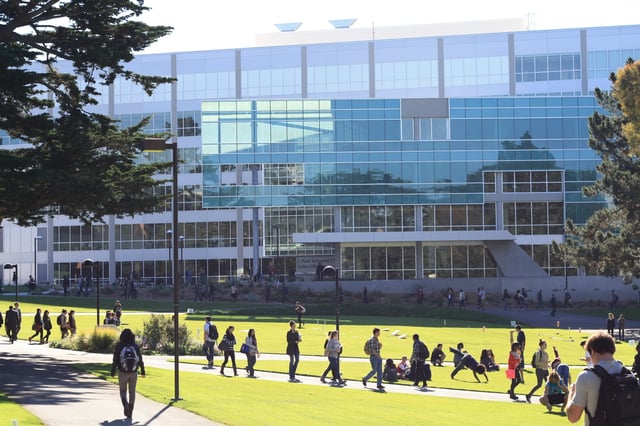
J. Paul Leonard Library
| 2016 | 2015 | 2014 | 2013 | |
|---|---|---|---|---|
| Freshman Applicants | 36,223 | 35,122 | 31,963 | 34,930 |
| Admits | 24,704 | 23,841 | 21,087 | 20,889 |
| % Admitted | 68.1 | 67.8 | 65.9 | 59.8 |
| Enrolled | 3,531 | 4,081 | 3,630 | 3,550 |
| GPA | 3.22 | 3.23 | 3.22 | 3.19 |
| SAT Composite | 975 | 975 | 990 | 995 |
| ACT Composite | 21 | 21 | 21 | 21 |
| *SAT out of 1600 |
In Fall of 2013, the university had 1,620 faculty, of which 683 (or 42 percent) were on the tenure track.[3]
The university's academic colleges are:
Liberal & Creative Arts
Business
Education
Ethnic Studies
Health and Social Sciences
Science and Engineering
In addition, the university has a College of Extended Learning.
SF State is on the semester system.
The university awards bachelor's degrees in 115 areas of specialization, master's degrees in 97, and a doctor of education (Ed.D.) in educational leadership. It jointly offers three doctoral programs: a doctorate in education in partnership with University of California, Berkeley with a concentration in special education, and two doctorates in physical therapy with University of California, San Francisco.
The most popular undergraduate majors are Business Administration, Biology, Kinesiology, Engineering, English, Communication Studies, Psychology, Criminal Justice Studies, Sociology, and Cinema.[31] The student-faculty ratio at San Francisco State University is 23:1, and 27.1 percent of its classes have fewer than 20 students.[32]
Accreditation
The university is accredited by the Accrediting Commission for Senior Colleges and Universities, a subgroup of the Western Association of Schools and Colleges.[33] The College of Business is accredited by the Association to Advance Collegiate Schools of Business (AACSB International).[34] The School of Engineering is accredited by the Accreditation Board for Engineering and Technology (ABET).[35]
Distinctions
San Francisco State is ranked the 12th top university in the United States by PayScale and CollegeNET's Social Mobility Index university rankings.[42] The Philosophical Gourmet Report lists San Francisco State University as one of the top eight universities to earn a terminal MA in philosophy.[43] The Academy of Management, the leading professional association for management scholars in the world, honored San Francisco State University's College of Business' Ohrenschall Center for Entrepreneurship with the McGraw-Hill/Irwin Innovation in Entrepreneurship Pedagogy Award (2002).[44] SFSU was one of the first California State University campuses to offer a doctorate of education. It was also instrumental in the establishment of the International University of Kyrgyzstan (1993).[44] The university is the only one in California to offer a bachelor's degree in technical and professional writing.[44] It is also the only university in the California State University system to offer a master's degree in Classics.[45]
The Cinema Department, in the College of Liberal & Creative Arts, was named one of the world's top film schools by Variety in 2019.[47] SFSU is also listed as one of the nation's top 25 film schools by The Hollywood Reporter, having produced countless leading filmmakers, with over 13 Academy Award wins among its alumni.[48][46]
The Sutro Library, located within the J. Paul Leonard Library, houses the largest collection of genealogical records west of Salt Lake City.[49]
Diversity
In 1969, the longest student strike in U.S. history[50] resulted in the establishment of the College of Ethnic Studies and increased recruiting and admissions of students of color.
In 2010, Forbes ranked San Francisco State as the 11th most diverse college in America, citing 51% minority students.[51] Among 121 Western Universities, San Francisco State was ranked 6th in terms of campus diversity by U.S. News & World Report in 2013.[52] In 2016, San Francisco State was ranked as the most diverse student body among the 100 largest American universities by Priceonomics.[53]
San Francisco State has the second largest Asian and Filipino American enrollment percentage in the Cal State system.[54]
| |
|---|---|
| African American | 5.4% |
| Asian American | 17.2% |
| Filipino American | 7.5% |
| Pacific Islander | 0.5% |
| White European Americans | 18.9% |
| Native American/American Indian | 0.2% |
| Mexican American/Chicano | 22.5% |
| Other Latino American | 9.8% |
| Multiracial Americans | 5.9% |
| Non-resident alien | 7.8% |
| Unknown | 4.2% |
Campus buildings
Academic buildings
Burk Hall (BH)
Business (BUS)
Creative Arts (CA)
Ethnic Studies & Psychology (EP)
Fine Arts (FA)
Health & Social Sciences (HSS)
Hensill Hall (HH)
Humanities (HUM)
J. Paul Leonard Library (LIB)
Science (SCI)
Sutro Library (in LIB)
Thornton Hall (TH)
Residence buildings, communities, and services
A dormitory building, Verducci Hall, was imploded in 1999, having sustained damage from the 1989 Loma Prieta earthquake.[63]
Conference facilities
Student life and Administrative services
Administration (ADM)
Cesar Chavez Student Center (CCSC)
Child Care Center (A.S. ECEC)
Mashouf Wellness Center (MWC)
Student Health Center (SHS)
Student Services (SSB)
Athletic facilities
Cox Stadium
Gymnasium (GYM)
Maloney Field
Athletics
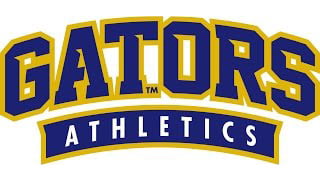
San Francisco State Gators wordmark
The school's intercollegiate athletics teams, nicknamed the Gators, compete in NCAA Division II and are a member of the California Collegiate Athletic Association (wrestling competes in the Rocky Mountain Athletic Conference). SF State fields twelve sports: men's and women's cross country, men's and women's soccer, women's volleyball, men's and women's basketball, men's baseball, wrestling, indoor track and field, outdoor track and field and softball.
SF State has produced three Major League Baseball players, of which two became All-Stars (former Mets shortstop Bud Harrelson, and former Brewers and Red Sox outfielder Tommy Harper). The soccer program has had one player enter the professional ranks. Jared MacLane played in the soccer Professional First Division in Santa Cruz, Bolivia.
The Gators have also produced thirteen National Football League players, including Billy Baird, Elmer Collett, Maury Duncan, Carl Kammerer, Douglas Parrish, and Floyd Peters. Mike Holmgren got his collegiate coaching start as the team's Offensive Coordinator in 1981. The football program ended in 1995.
SF State Wrestling scored at a national championship meet every year from 1963-64 to 2016-17.[67]
As of 2019, the Gators have earned one NCAA team championship at the Division II level:[68]
Men's (1) Wrestling (1): 1997[69]
Mascot
The school first adopted their mascot, the Gator, in 1931. After a call for a mascot by the student newspaper the Bay Leaf, students suggested the "alligator" for its strength and steadfastness. The students also suggested the spelling "Golden Gaters," with an "e," in reference to the Golden Gate. Students voted in favor of the name, but after numerous "misspellings" by the newspaper, the use of Gator, with an "o," stuck.[70][71]
KSFS
Notable faculty and alumni
See also
Acoustic Lounge on KSFS
Bay Area Television Archive
DOC Film Institute
Fourteen Hills: The Creative Writing MFA program's literary magazine
New American Writing: once-a-year literary magazine
